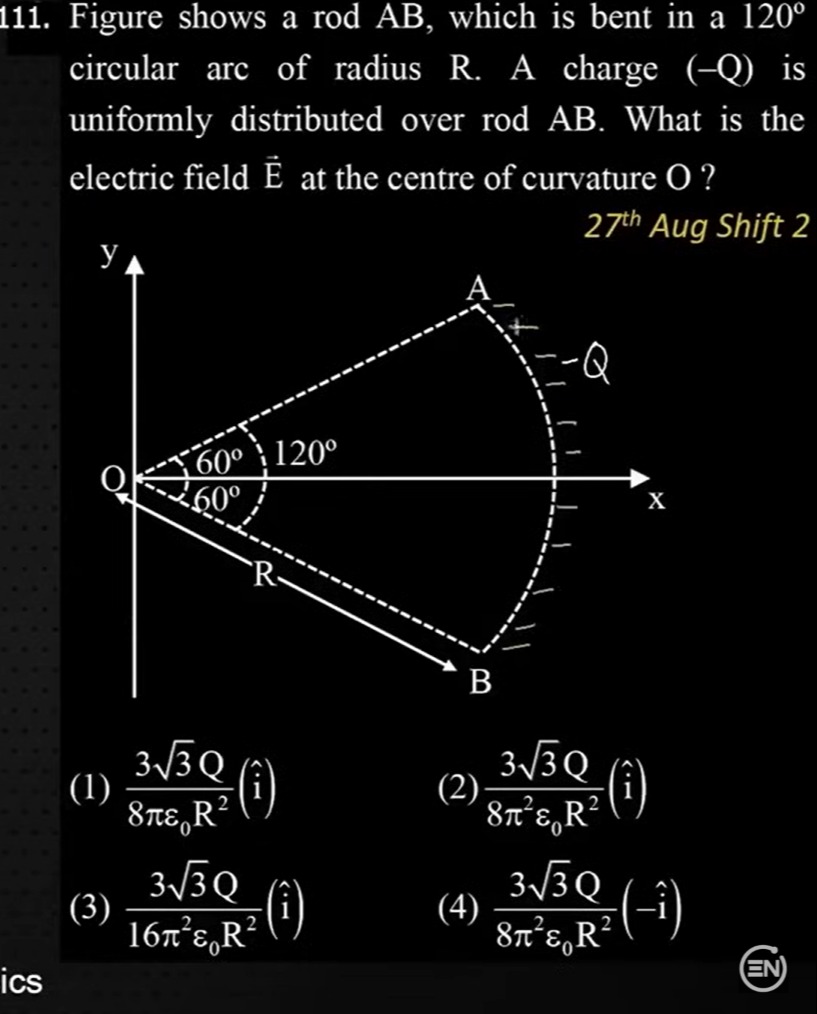Question
Question: Figure shows a rod AB, which is bent in a 120° circular arc of radius R. A charge (-Q) is uniformly ...
Figure shows a rod AB, which is bent in a 120° circular arc of radius R. A charge (-Q) is uniformly distributed over rod AB. What is the electric field E at the centre of curvature O?

A
8πϵ0R233Q(i^)
B
8π2ϵ0R233Q(i^)
C
16π2ϵ0R233Q(i^)
D
8π2ϵ0R233Q(−i^)
Answer
8π2ϵ0R233Q(−i^)
Explanation
Solution
Solution Explanation
- The uniformly-charged 120° arc (subtended angle = 120° = 2π/3 rad) has linear charge density
λ = –Q/(R·(2π/3)) = –(3Q)/(2πR). - Consider a small element at angle θ (measured from the x‑axis). Its charge is
dq = λR dθ = –(3Q/(2π)) dθ. - The contribution to the electric field at the center is
d𝐸 = (1/(4πε₀))·(dq/R²) (cosθ î + sinθ ĵ).
Substituting dq gives
d𝐸 = –(1/(4πε₀))·(3Q/(2πR²)) (cosθ î + sinθ ĵ) dθ. - Integrate θ from –π/3 to +π/3. Because the sine (y) components cancel by symmetry, only the x‑component survives:
Eₓ = –(1/(4πε₀))·(3Q/(2πR²)) ∫₋π/3^(π/3) cosθ dθ
= –(1/(4πε₀))·(3Q/(2πR²))·[sinθ]₋π/3^(π/3)
= –(1/(4πε₀))·(3Q/(2πR²))·(sin(π/3) – (–sin(π/3)))
= –(1/(4πε₀))·(3Q/(2πR²))·(2(√3/2))
= –(3√3Q)/(8π²ε₀ R²). - Hence, the net electric field at the center is in the –î direction.
